How to reap India’s demographic dividend
As has been reiterated by EducationWorld in our analyses of Union budgets of the past five years, given political will and resolution there’s considerable scope for cutting expenditure and rearranging the spending priorities of the Central government to raise substantial resources for investment in the country’s abundant but woefully neglected human resource – Dilip Thakore
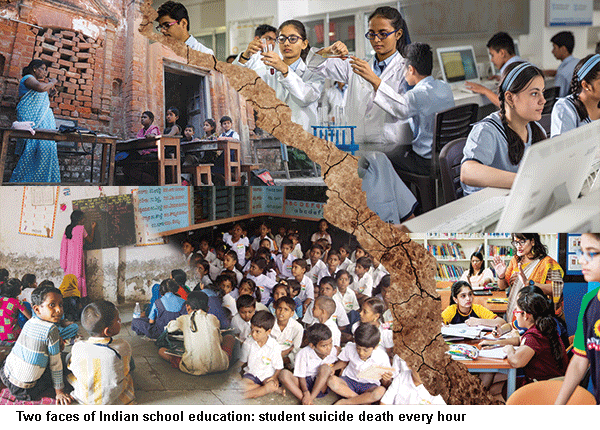 The much-hyped ceremony of presenting the annual Union Budget of the Central government came and went on February 1 without more than perfunctory lip service to the most important obligation of government — to make sufficient provision for developing the country’s abundant human resource. Although there is virtual unanimity within academia and the intelligentsia that post-independence India’s children and youth of school and college-going age are the country’s potentially most valuable resource, year after year, the Centre makes pathetically meagre provision for this neglected half of the country’s 1.32 billion citizens.
The much-hyped ceremony of presenting the annual Union Budget of the Central government came and went on February 1 without more than perfunctory lip service to the most important obligation of government — to make sufficient provision for developing the country’s abundant human resource. Although there is virtual unanimity within academia and the intelligentsia that post-independence India’s children and youth of school and college-going age are the country’s potentially most valuable resource, year after year, the Centre makes pathetically meagre provision for this neglected half of the country’s 1.32 billion citizens.
Unsurprisingly, the Union Budget 2018-19 presented to Parliament and the nation by finance minister Arun Jaitley last month, wasn’t a departure from the norm. Out of the proposed total expenditure of Rs.24.42 lakh crore of the Central government in fiscal 2018-19, Jaitley has allocated a mere Rs.85,010 crore for primary, secondary and higher education — Rs.1,269 per capita per year for the country’s 670 million children and youth below age 24. This allocation translates into a mere 0.45 percent of the country’s projected GDP of Rs.187 lakh crore next year, and is only marginally greater than the Rs.82,771 crore budgeted (but not spent) by the BJP-led NDA government in 2015-16.
Admittedly, the main burden of educating India’s children is the obligation of the country’s 29 state governments. However, it’s well-known that following the Centre’s lead, state governments don’t make adequate provision for education either. Together the Centre and states average 3.5 percent of GDP on education against the 6 percent recommended by the Kothari Commission way back in 1966, and against the 6-10 percent of GDP that the developed OECD (and ASEAN) countries spend on education of their children and youth. The quality of education, provided by English-teaching-averse state governments neck-deep in teacher recruitment and appointments and textbooks printing rackets, is the pits.
Assuming that state governments’ per capita expenditure on public education is a multiple of seven of the allocation of the Centre (to aggregate 3.5 percent of GDP), the amount spent by the Central and state governments per child and youth — excluding pre-primary education which bizarrely falls under the administrative purview of the Union ministry of women and child development — averages only Rs.8,883 ($136) per year. The fallout is that the quality of public education dispensed in the country’s 1.20 million government — especially state government — schools is so poor that India’s estimated 320,000 ‘recognised’ private schools host over 40 percent of the 250 million in-school children at the start of every academic year. Even dirt-poor parents are desperate to enroll their children in the country’s 450,000 low-cost mostly ‘unrecognised’ private budget schools which have mushroomed in slums and low-income areas.
Despite this desperation of the public to avail good quality early childhood (pre-primary) and primary, even if not secondary education — the country hosts a mere 135,000 secondary schools — year after year, over-hyped finance ministers ruthlessly slash the modest demand of the grandiosely named Union ministry of human resource development and make pathetic provision for the education of the world’s largest child population with state governments following suit and compounding their parsimony by passively witnessing the destruction of government schools by truant teachers and corrupt education bureaucrats. “My government’s goal is to assist and provide opportunity to every Indian to realise her full potential capable of achieving her economic and social dreams,” intoned Jaitley, announcing the BJP-led NDA government’s dribs-and-drabs provisions for education while presenting Budget 2018-19 — an exercise in futility, completely divorced from the needs of the world’s largest child population.
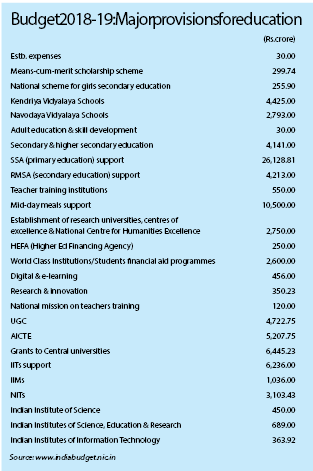 The usual excuse advanced for the foolish and self-defeating neglect of public education in independent India’s failed national development effort was the near bankruptcy of the State after almost 200 years of colonial rule, which made sufficient allocation for education impossible ab initio. But as has been repeatedly reiterated by EducationWorld in our analyses of Union budgets of the past five years, given political will and resolution there’s considerable scope for cutting expenditure and rearranging the spending priorities of the Central government to raise substantial resources for investment in the country’s abundant but woefully neglected human resource.
The usual excuse advanced for the foolish and self-defeating neglect of public education in independent India’s failed national development effort was the near bankruptcy of the State after almost 200 years of colonial rule, which made sufficient allocation for education impossible ab initio. But as has been repeatedly reiterated by EducationWorld in our analyses of Union budgets of the past five years, given political will and resolution there’s considerable scope for cutting expenditure and rearranging the spending priorities of the Central government to raise substantial resources for investment in the country’s abundant but woefully neglected human resource.
Curiously, there’s not even a ritual reference in Jaitley’s 109-minute Budget 2018-19 speech for need to prune government expenditure. It’s plainly apparent to every citizen that government expenditure on itself is lavish, as testified by the huge pay increases that members of Parliament routinely vote themselves, the cavalcade of motor cars and security personnel that follow every minister, the private airline of government, free air and train travel perquisites and the excellent housing to which every minister, MP and bureaucrat is entitled. Establishment expenses of the Union government budgeted at a massive Rs.4.37 lakh crore in Budget 2017-18 are expected to be 7 percent higher on March 31, 2018 (revised estimate). And for 2018-19, the Centre’s establishment expenses are budgeted at a massive Rs.5.08 lakh crore — 16 percent higher than budgeted for 2017-18. This means that 20.8 percent of the government’s total revenue income from taxation and all other sources is swallowed up by establishment costs and maintaining the country’s 3.2 million Central government employees (excluding 1 million defence services personnel) insulated against inflation by generous Pay Commission awards, to live in the grand style to which they have become accustomed. Curiously, none of the country’s economic pundits and pink paper journalists and editors have deemed it appropriate to comment on the runaway rise in establishment expenses year after year. We believe a 10 percent reduction in establishment expenses next year is entirely feasible and a impressive sum of Rs.50,000 crore could be deployed for investment in education.
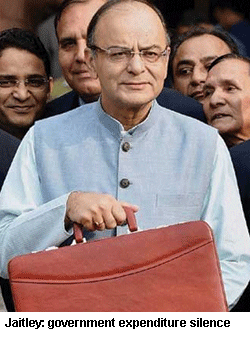 Likewise, it’s quite feasible to cut 5 percent of the Union government’s massive Rs.1.76 lakh crore (Rs.175,944 crore) food and PDS (public distribution system) and petroleum allocation under which the poorest citizens are provided foodgrains, kerosene, cooking oil and gas at subsidised prices through more accurate targeting. It’s common knowledge that the PDS is riddled with rackets and millions of unqualified, middle class citizens are availing subsidised grain from the country’s 535,000 PDS retail stores. With the Unique Identification Authority of India’s biometrics scanning Aadhaar card programme now covering over 1 billion citizens, it should be possible for the Central government to weed out all over-qualified citizens from the PDS system. Therefore, a saving of 5 percent — Rs.13,317 crore — is feasible if there’s official grit and determination to mobilise resources for investment in the development of the country’s next generation who will have to bear the brunt of international competition in the rapidly globalising world.
Likewise, it’s quite feasible to cut 5 percent of the Union government’s massive Rs.1.76 lakh crore (Rs.175,944 crore) food and PDS (public distribution system) and petroleum allocation under which the poorest citizens are provided foodgrains, kerosene, cooking oil and gas at subsidised prices through more accurate targeting. It’s common knowledge that the PDS is riddled with rackets and millions of unqualified, middle class citizens are availing subsidised grain from the country’s 535,000 PDS retail stores. With the Unique Identification Authority of India’s biometrics scanning Aadhaar card programme now covering over 1 billion citizens, it should be possible for the Central government to weed out all over-qualified citizens from the PDS system. Therefore, a saving of 5 percent — Rs.13,317 crore — is feasible if there’s official grit and determination to mobilise resources for investment in the development of the country’s next generation who will have to bear the brunt of international competition in the rapidly globalising world.
Yet perhaps the greatest injustice and iniquity visited upon post-independent India’s poor majority and their children is the award of unmerited subsidies to the relatively prosperous middle class while successive governments at the Centre plead poverty to fund public education, health and law and order. According to P.C. Chidambaram, former Union finance minister, unmerited subsidies in higher education, piped water, electricity, LPG, low suburban train fares, irrigation, public sector companies etc, aggregate to a massive 10-14 percent of GDP. This head offers great scope to raise resources for human development. With the GDP for 2018-19 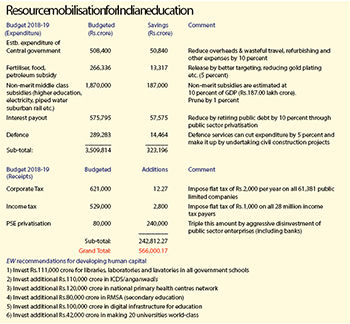 projected at Rs.187 lakh crore, cutting and eliminating the most egregious hidden/unmerited subsidies for the middle class — piped water charges and universal subsidisation of higher education — by a mere 1 percent could release Rs.1.87 lakh crore (Rs.187,000 crore) for investment in education.
projected at Rs.187 lakh crore, cutting and eliminating the most egregious hidden/unmerited subsidies for the middle class — piped water charges and universal subsidisation of higher education — by a mere 1 percent could release Rs.1.87 lakh crore (Rs.187,000 crore) for investment in education.
Another head of the Central government’s budget which offers considerable scope for saving and investment is the annual interest burden budgeted at a massive Rs.5.94 lakh crore next fiscal. By accelerating the BJP-NDA government’s promised privatisation programme, this ever-increasing interest burden could be reduced through a debt retirement programme which would simultaneously transform India into a prosperous free market economy which it was for over five millennia before its disastrous tryst with Soviet-inspired neta-babu socialism in post-independence India.
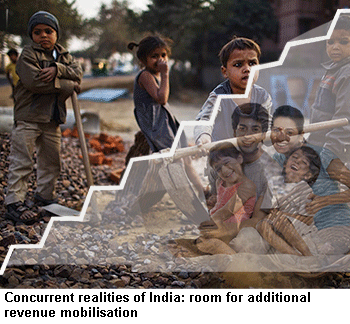 Even on the taxation and revenue generation side of the Budget ledger, there’s considerable scope for raising revenue for overdue investment in human development. Although the business media tend to raise a hue and cry about the smallest tax increases, as indicated in a recent report by UK-based global charity Oxfam, the upper class has cornered most of the wealth generated in independent India’s national development effort. According to Oxfam’s World Inequality Report, 1 percent of the population owns 73 percent of the wealth/assets of the country. Nor has the middle class done badly. Every year, over 20 million middle class Indians travel abroad for vacations and leisure (cf. a tourism inflow of a mere 5 million). Therefore, there is some room to raise additional revenue from the elite and middle classes (see box p.88).
Even on the taxation and revenue generation side of the Budget ledger, there’s considerable scope for raising revenue for overdue investment in human development. Although the business media tend to raise a hue and cry about the smallest tax increases, as indicated in a recent report by UK-based global charity Oxfam, the upper class has cornered most of the wealth generated in independent India’s national development effort. According to Oxfam’s World Inequality Report, 1 percent of the population owns 73 percent of the wealth/assets of the country. Nor has the middle class done badly. Every year, over 20 million middle class Indians travel abroad for vacations and leisure (cf. a tourism inflow of a mere 5 million). Therefore, there is some room to raise additional revenue from the elite and middle classes (see box p.88).
Thus resources can — and should — be raised to revolutionise the country’s moribund public education system to give all our children a fighting chance to compete and survive in the 21st century. It’s not too much to ask for.





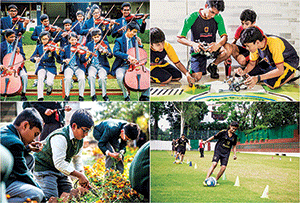










Add comment